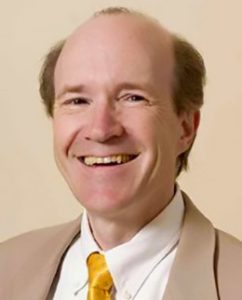A recent study in Brain and Cognition looks at differences between the Transcendental Meditation® (TM®) technique and other types of meditative practices. It turns out that effortlessness is the key.
With the help of 87 TM practitioners at Maharishi University of Management in Fairfield, Iowa, some of whom had been practicing the technique for as little as one month and others as long as five years, researchers studied participants’ brain wave activity and subjective experiences in three different situations: while resting with eyes closed, during TM practice, and while performing a complex task.
Practice Does Not Make Perfect
“There are two key findings from this study,” says lead author Dr. Fred Travis. “First, individuals practicing Transcendental Meditation for just one month reported the same frequency of Transcendental Consciousness experiences during their practice as individuals meditating for five years,” Dr. Travis says, referring to the quiet state of restful alertness produced during TM practice.
“This supports the understanding that Transcendental Meditation uses the natural tendency of the mind to transcend—to move from active thinking to deep, inner silence,” adds Dr. Travis. “Extensive practice doesn’t make a natural process go any better.” The experience of transcending is just as normal, natural, and easily accessed for human beings as wakefulness or sleep.
A Signature of Effortlessness
To introduce the second finding, Dr. Travis explains something called “default mode network,” which is a “large-scale brain network” involving the front and back of the brain when you’re thinking.

Dr. Fred Travis, lead author of study published in Brain and Cognition
The level of activity in this network indicates how actively focused you are on work or problem-solving. Counterintuitively, when you’re interacting with the world, the “default mode network” activity decreases, but when you’re sitting quietly with eyes closed, activity is high.
This distinction helps brain scientists understand the unique effortlessness of the TM technique. “Activity in the default mode network is reported to go down in all other types of meditation, indicating a more active state, since they involve focus and control of the mind,” reports Dr. Travis, but activity “in the default mode network remained high during Transcendental Meditation practice, indicating greater rest.”
How the Brain Functions Differently during TM®
“While people may not have had the experience of effortless transcending and so do not know what it feels like to transcend, they can now see the objective high activation in the default mode network—and see that something different is happening during Transcendental Meditation practice,” notes Dr. Travis.
Dr. Travis also reports two other differences between sitting with eyes closed and practicing TM. There was more beta wave activity in the parts of the brain associated with memory and the physical aspects of speech when individuals simply rested with eyes closed. “This could reflect the mental chatter that goes on when one’s eyes are closed,” Dr. Travis says.
“Individuals practicing TM for just one month reported the same frequency of Transcendental Consciousness experiences during their practice as individuals meditating for five years.” —Fred Travis, Ph.D.
During TM practice, however, researchers noted more theta brain waves in a prefrontal cortex region of the brain that is associated with reward anticipation. This may indicate TM meditators’ subjective experience of quieter, more settled, and more “charming” levels of thought during transcending. Significantly, this process was free of effort or control, since the default mode network activity was simultaneously high.
Recognizing these differences in mental activity is critical, Dr. Travis says: “Researchers, commentators, and popular media often lump meditation practices together. This distorts understanding the benefits of different meditations and confounds applying these approaches to different subject populations.”
Read more about the study at MedicalXpress.com ►
Video: Bob Roth explains effortlessness ►


Comments